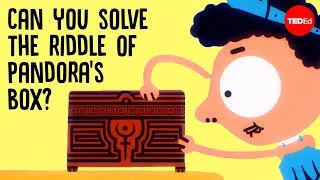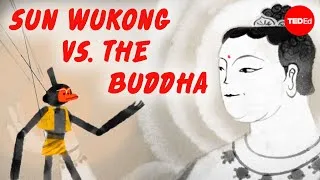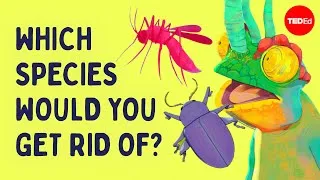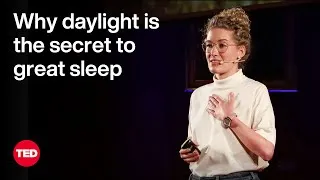請雙擊下方英文字幕播放視頻。
譯者: Lilian Chiu
審譯者: Helen Chang
00:08
Australians call them “runners."
The British know them as “trainers."
0
8722
4531
澳洲人稱它們為「跑鞋」。
英國人管它們叫做「訓練鞋」。
00:13
Americans refer to them as “tennis shoes”
or “sneakers."
1
13253
4070
美國人叫它們做
「網球鞋」或「運動鞋」。
00:17
Whatever you call them,
these rubber-soled, casual shoes
2
17323
3548
不論怎麼稱呼它們,全世界都有
00:20
are worn by billions of people
around the world.
3
20871
3409
數十億人穿這種橡膠鞋底的鞋子。
00:24
Originally invented
in the late 19th century,
4
24280
3040
這種帆布加橡膠的簡單產物,
最早是在十九世紀末期被發明出來,
00:27
these simple canvas and rubber creations
have changed a lot
5
27320
3789
從最早被穿上路至今,
它們已經改變了很多。
00:31
since they first hit the pavement.
6
31109
2161
00:33
Today, sneaker consumption
is at an all-time high.
7
33270
3820
現今,運動鞋的消費量是史上最高。
00:37
No country buys more sneakers
than the United States,
8
37090
3476
沒有其他國家像美國
買這麼多的運動鞋,
00:40
where people purchase 3 pairs
a year on average.
9
40566
3484
在美國,平均一人一年要買三雙。
00:44
To meet this demand, roughly 23 billion
shoes are produced each year,
10
44050
5089
為了滿足這需求,每年大約
要製造出兩百三十億雙鞋子,
00:49
mostly in factories
across China and Southeast Asia.
11
49139
3700
大部分由中國和東南亞的工廠產出。
00:52
But making shoes has become
more complicated, more labor-intensive,
12
52839
4049
但鞋子的製造已經變得
更複雜、更勞力密集、
00:56
and in some ways, more dangerous,
13
56888
2370
在某種意義上,也更危險,
00:59
for the workers involved
and for our planet.
14
59258
3345
對相關的工人和地球皆是如此。
01:02
Shoe manufacturing
accounts for roughly one-fifth
15
62603
2830
時尚產業的碳排放
大約有五分之一來自生產鞋子。
01:05
of the fashion industry’s
carbon emissions.
16
65433
3250
01:08
Sneakers alone generate 313 million
metric tons of carbon dioxide every year,
17
68683
6999
每年,光是運動鞋就會產生
三億一千三百萬
立方公噸的二氧化碳,
01:15
which is equivalent to the annual
emissions of 66 million cars.
18
75682
4841
等同於六千六百萬台
汽車的年排放量。
01:20
To better understand
your shoe’s carbon footprint,
19
80523
3310
為了更進一步了解
你的鞋子的碳足跡,
01:23
let’s dive into the anatomy of a sneaker.
20
83833
3230
咱們先來看看運動鞋的解剖學。
01:27
For starters, the heel, insole,
midsole, and upper layer
21
87063
4673
首先,鞋跟、內底、中底,及上層
01:31
are usually made from synthetic textiles
like polyester, nylon, latex,
22
91736
5294
材料通常是合成織物,
如聚酯、尼龍、乳膠,及聚氨酯。
01:37
and polyurethane.
23
97030
1630
01:38
Mining the fossil fuels that make up these
materials emits tons of greenhouse gases.
24
98660
5448
開採出製造這些材料
要用的化石燃料
就會排放數公噸的溫室氣體。
01:44
And processing those raw ingredients
into synthetic textiles
25
104108
3990
把這些原物料加工成為合成織物
01:48
also uses a lot of energy,
further compounding that pollution.
26
108098
4640
也會用掉大量能源,讓污染加劇。
01:52
Some sneaker tops are made from
natural sources like leather,
27
112738
3430
有些運動鞋的鞋面是用
天然資源製成,如皮革,
01:56
but tanning this material
relies on chromium;
28
116168
3305
但要用鉻讓這種材料變成棕褐色;
01:59
a carcinogenic chemical that can damage
freshwater ecosystems.
29
119473
4670
鉻是一種致癌化學物,
會傷害淡水生態系統。
02:04
The outer soles of most shoes
are made of rubber
30
124143
2990
大部分鞋子的外底是用橡膠做成,
02:07
that’s gone through a process
called vulcanization.
31
127133
3080
橡膠會經過一種叫做硫化的過程。
02:10
This technique adds sulfur to superheated
raw rubber to create a material
32
130213
4727
它的技巧在於將硫
加入過熱的生橡膠,
創造出一種又有彈性
又結實的材料。
02:14
that’s both elastic and sturdy.
33
134940
2767
02:17
Until recently, sneakers used
natural rubber for this process.
34
137707
3923
到最近之前,運動鞋在這個
過程中都是使用天然橡膠。
02:21
But today, most outer soles are made
with a synthetic blend of natural rubber
35
141630
4995
但現今大部分外底材料是由天然橡膠
02:26
and byproducts from coal and oil.
36
146625
3510
和媒及石油的副產品混合合成。
02:30
Producing these materials accounts
for 20% of a sneaker’s carbon footprint.
37
150135
5235
運動鞋的碳足跡有 20%
來自生產這些材料。
02:35
But more than two-thirds of the shoe’s
carbon impact comes from the next step:
38
155370
4634
但鞋子有超過三分之二的碳衝擊
是來自下一個步驟:
02:40
manufacturing.
39
160004
1910
製造。
02:41
A typical sneaker is comprised
of 65 discrete parts,
40
161914
4176
標準的運動鞋是由
六十五個分開的部分組成,
02:46
each of which is produced
by specialized machinery.
41
166090
3179
每一個部分都要用
專門的機器來製造。
02:49
This means it’s cheaper for factories
to mass-produce each piece separately
42
169269
4303
那就表示,對工廠而言,
分開大量生產單一個部分,
02:53
rather than manufacturing
every part under one roof.
43
173572
3762
會比在同一個屋簷下
生產所有部分更便宜。
02:57
But the transportation
required to ship these pieces
44
177334
3255
但把各部分運送到
一家組裝工廠的交通運輸
03:00
to one assembly plant emits even more CO2.
45
180589
4673
會排放的二氧化碳更多。
03:05
Once the components arrive
at the assembly line,
46
185262
2440
等到組件到達了組裝線,
03:07
they undergo cutting, pouring, melting,
baking, cooling, and gluing,
47
187702
5282
會經過切割、傾注、熔解、
烘烤、冷卻、黏合的過程,
03:12
before the final products
can be stitched together.
48
192984
3560
然後最終產品才能被縫合起來。
03:16
The assembly of a typical sneaker
requires more than 360 steps,
49
196544
4478
將標準的運動鞋組裝起來
需要至少三百六十個步驟,
03:21
and accounts for the remaining 20%
of a sneaker’s environmental impact.
50
201022
5515
運動鞋剩下那 20%
對環境的衝擊就來自這裡。
03:26
The dispersion of factories fuels
another problem as well: labor abuse.
51
206537
5981
工廠分散,也造成另一個問題:
勞工虐待。
03:32
Most brands don’t own
or operate their factories,
52
212518
3700
大部分品牌不擁有
不經營自己的工廠,
03:36
so the plants they work with
are in countries
53
216218
2517
所以它們的合作工廠通常都位在
03:38
with little to no worker protection laws.
54
218735
3120
很少/沒有工人保護法律的國家。
03:41
As a result, many laborers
earn below the living wage,
55
221855
3700
因此,許多勞工賺的薪水
低於生活所需的工資,
03:45
and are exposed to harmful chemicals,
like toxic glue fumes.
56
225555
4390
且會暴露在有害的化學物質中,
比如有毒的黏著氣味。
03:49
When manufacturing is complete,
57
229945
1914
當製造完成時,
03:51
the shoes are packaged and transported
to stores around the globe.
58
231859
4306
鞋子會被包裝
並運送到全球的店家。
03:56
For many, these shoes could last years.
59
236165
2863
對許多人而言,
這些鞋子可以穿好幾年,
03:59
But for someone running 20 miles a week,
60
239028
2687
但對於一週跑二十英里的人而言,
04:01
a pair of running shoes will start
wearing out after roughly 6 months.
61
241715
4612
一雙跑鞋在大約六個月
之後就會開始磨損。
04:06
Since the shoes are made of
so many different materials,
62
246327
3200
因為鞋子是由許多種
不同的材料製成,
04:09
they’re almost impossible to break down
into recyclable components.
63
249527
4452
幾乎不可能拆開
成為可回收的部份。
04:13
20% of these shoes are incinerated,
while the rest are tossed into landfills
64
253979
4912
這些鞋子有 20% 會被焚化,
其他的則丟到垃圾掩埋場,
04:18
where they can take up to 1,000 years
to degrade.
65
258891
3980
在那裡可能要花上一千年才會分解。
04:22
So, how can we balance
our love of sneakers
66
262871
3071
我們要如何在我們對運動鞋的熱愛
04:25
with the need for sustainability?
67
265942
2037
和對永續性的需求之間取得平衡?
04:27
First, designers should streamline
design elements
68
267979
3034
第一,設計師應該要
將設計元素精簡,
04:31
and focus on eco-friendly materials.
69
271013
2986
並以環保材料為主。
04:33
Factories need to develop energy efficient
manufacturing processes
70
273999
3680
針對合併步驟和運動鞋的各部分,
04:37
that consolidate steps and sneaker parts.
71
277679
3030
工廠得要開發能源效益高的製程。
04:40
And consumers should support
companies using clean energy
72
280709
3520
消費者應該要支持使用
乾淨能源和人道製程的公司。
04:44
and ethical manufacturing processes.
73
284229
2763
04:46
We can also buy fewer shoes,
wear them for longer,
74
286992
3480
我們也可以少買鞋子,穿久一點,
04:50
and donate those we no longer need.
75
290472
2680
把不要的鞋子捐出。
04:53
So no matter what your style, we can all
take steps towards a sustainable future.
76
293152
5200
不論你穿哪種風格,
我們都能朝向永續的未來邁進。
New videos
關於本網站
本網站將向您介紹對學習英語有用的 YouTube 視頻。 您將看到來自世界各地的一流教師教授的英語課程。 雙擊每個視頻頁面上顯示的英文字幕,從那裡播放視頻。 字幕與視頻播放同步滾動。 如果您有任何意見或要求,請使用此聯繫表與我們聯繫。







